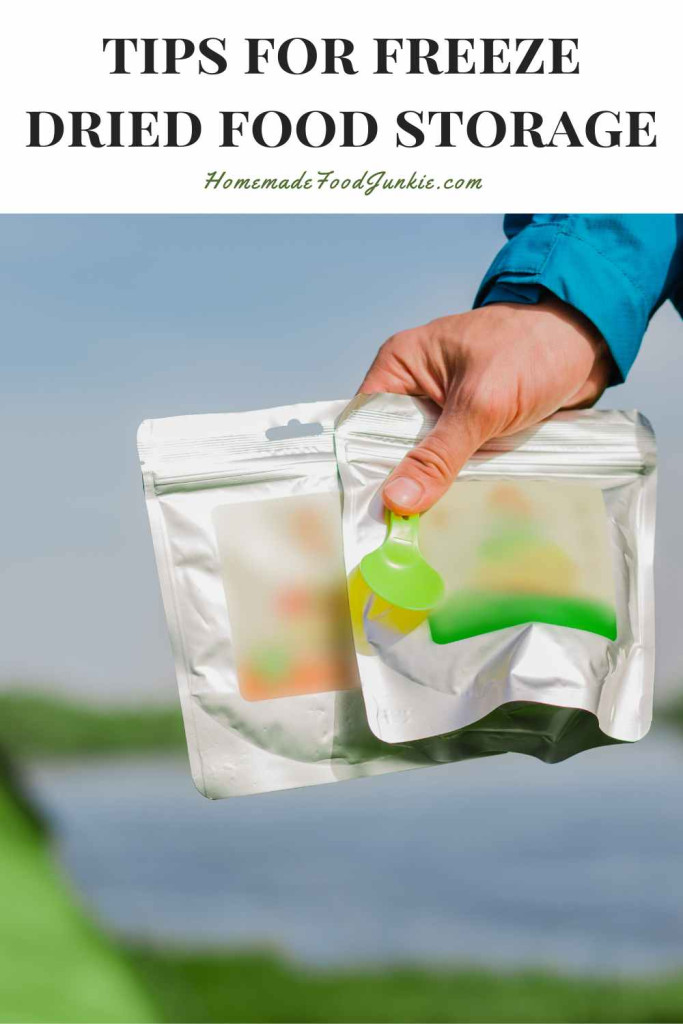Proper Freeze dried food storage is vital for maximum pay back on your investment of time and money. This post covers all the things you need to know to protect your freeze dried foodstuffs in long term storage. There are some important things to know.
Preserved foods of all types are vulnerable to moisture, temperature, oxygen and light degradation. Freeze dried foods are no exception. Protect your freeze dried foods from oxygen (read more about that in this post), moisture (read about silica gel packets and when they are appropriate here) and light.
For best results in long Term freeze dried food storage you must think ahead and plan a few things. We dont want your investment of time and money to be ruined.

What Ruins Freeze Dried Food Storage:
What affects freeze dried food storage? Several things. Here’s a run down of what you need to know to safely store your food long term once it’s freeze dried.
Moisture:
Freeze dried food storage must be kept moisture free over time. Freeze-drying removes almost all moisture from the food, making it lightweight, compact, and stable for long-term storage. If moisture were to somehow re-enter the freeze-dried food during storage, it will cause it to spoil or degrade. Here’s how that works:
- Spoilage: Moisture creates a breeding ground for bacteria, mold, and other microorganisms. When moisture enters freeze-dried food, it can make the food unsafe to eat.
- Texture and Taste Changes: Freeze-dried food is prized for its crispness and flavor, which are preserved by removing moisture. Reintroducing moisture can cause the food to become soggy, mushy, or otherwise unpleasant in texture and taste.
- Shortened Shelf Life: Even a small amount of moisture compromises the stability of freeze-dried food over time, leading to a shorter shelf life. Moisture absorption causes the food to degrade more quickly, reducing its nutritional value and overall quality.
Packaging tip: Make sure your food packaging area, equipment and hands are completely clean and dry before you remove your food from the freeze dryer and keep them that way through the entire packaging process. Be sure you are storing your freeze dried food in appropriate moisture free, containers. Mason jars and air tight plastic containers make good short term storage containers and will keep the food moisture free if they are kept sealed and resealed properly after each use. For long term freeze dried food storage, heavy duty mylar food storage bags work well.
Storage tip: Freeze dried food storage works best in airtight, moisture proof containers. Avoid opening the containers unnecessarily and ALWAYS close and seal the package or jar quickly after use. Exposure to air can introduce moisture through humidity.
You will know if moisture has gotten into your freeze dried food once you open the package. Powdered freeze dried foods will clump together when moisture get into the package. Freeze dried Whole Foods like berries, bananas, and green beans lose the crisp, crunchy texture and get very chewy. O2 packets and silica gel packs can both help keep freeze dried foods crisp in jars you use frequently. Also get a jar sealer and reseal your jars after each use for best results.
Oxygen:
Oxygen ruins freeze-dried food through a process known as oxidation. While freeze-drying removes most of the moisture from the food, it doesn’t eliminate oxygen. Oxygen needs to be removed when you package your freeze dried foods as best you can. And Now put a properly sized, fresh O2 packet into your container along with the food.
Depending on the container you use, and how often you open it to retrieve food for recipes, Oxygen will enter the package over time. This is especially true if the bag or jar is not properly sealed or if the packaging materials are not an oxygen-barrier. Why is this a problem?
Oxygen reacts with the fats, oils, and other components in freeze-dried food, slowly causing them to become rancid. This process is called Oxidation. Oxidation leads to deterioration in flavor, color of the food, aroma, and nutritional value. Oxidized food gets stale and unpalatable.
But the most important thing is oxidized foods lose nutritional content. Most particularly vitamins and antioxidants.
TIP: To prevent oxygen from ruining freeze-dried food, store it in oxygen-barrier packaging, such as vacuum-sealed or impact sealed mylar bags, sealed cans or even sealed mason jars with oxygen absorbers. This is important to minimize oxygen exposure and prolong the shelf life of the food.
For short term freeze dried food storage some freeze dried foods will last well in your pantry for up to several years in a sealed mason jar with O2 absorbers. Be sure to reseal the jars after each use and refresh your O2 absorbers if they get exhausted.
Light:
Freeze-dried food (like all processed foods) needs to be stored in a dark environment. Exposure to light, especially sunlight or artificial light sources, trigger photochemical reactions in foods.
Light exposure causes bleaching and color changes in the food, particularly in fruits and vegetables. Pigments such as chlorophyll and carotenoids are sensitive to light and can degrade when exposed to it. The food looks pale and unpalatable. And Light-induced reactions also cause off-flavors and aromas to develop over time.
Most importantly, freeze dried food storage with too much light eventually contributes to loss of vitamins, antioxidants, and other nutrients present in freeze-dried food. When you minimize light exposure, the food remains fresher for longer, retaining its nutritional integrity, color and flavor.
TIP: Long Term Freeze dried Food Storage is most successful in opaque or dark-colored bags, Jars and containers. And/ or in a pantry or cupboard away from direct sunlight and artificial light sources. This helps protect the food from light-induced degradation so it remains nutritious, flavorful, and appealing over time.
Temperature:
For freeze dried food storage the ideal temperature is between 32°F and 50°F. These cooler temperatures slow down chemical reactions, including oxidation and degradation of nutrients. This helps to preserve the quality, flavor, and nutritional content of freeze-dried foods for a longer period.
Although storing freeze-dried foods at room temperature is acceptable, it may result in a shorter shelf life compared to cooler storage conditions. Seasonal Temperature changes matter if it fluctuates often outside of the ideal storage temperature range.
Store freeze-dried food in a location where temperatures remain relatively stable. Avoid storing freeze-dried food in areas prone to temperature fluctuations, such as near windows, doors, or heating vents. Using insulated containers or storage areas can help buffer against temperature changes and maintain a more stable environment for the food.
Tip: Root cellars, basement store rooms and insulated cold rooms in your home, garage or shop are recommended if your local temperatures get seasonally extreme. Longterm freeze dried food storage is optimal when the temperatures are cool and stable.
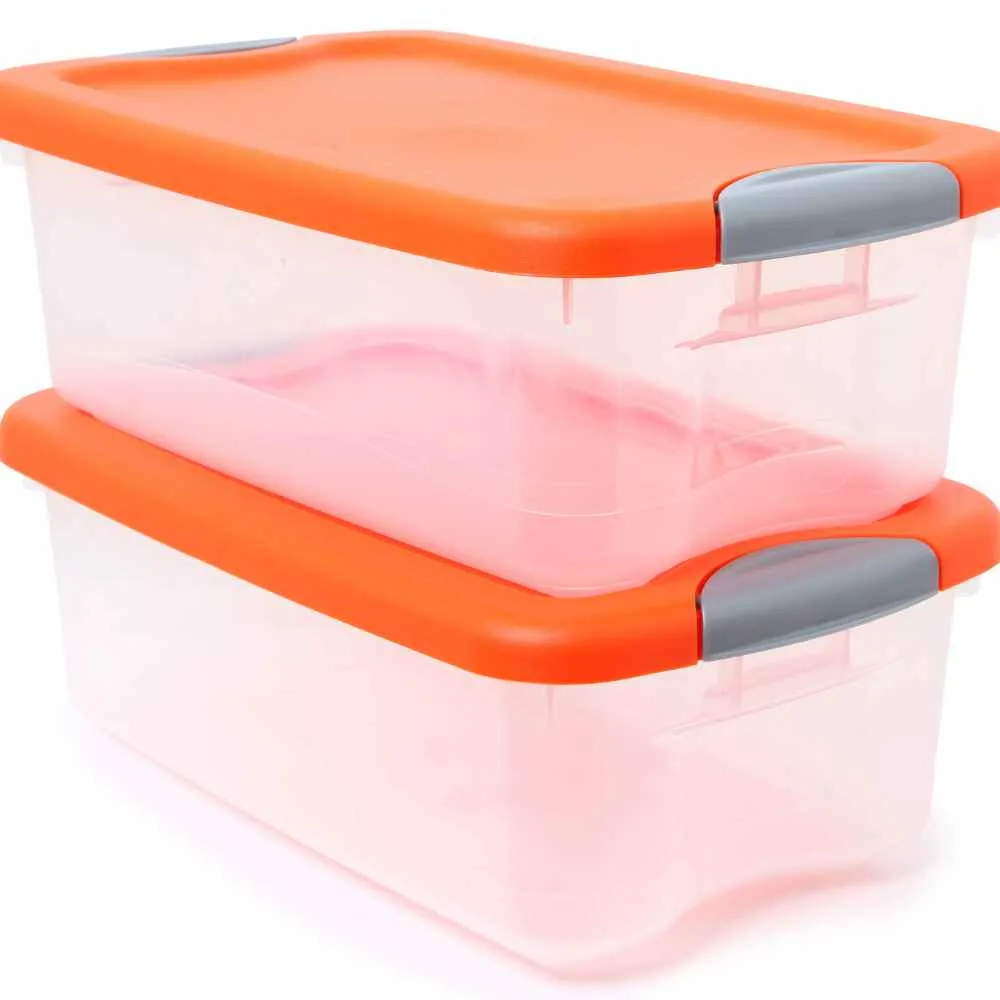
When stored in a cool dark place, transparent storage containers help you see the freeze dried food package labels easily.
What About Pests?
When you design Freeze dried food storage be sure to plan for pests. Pests, like mice and rats are masters at accessing storage facilities and they can easily ruin freeze dried foods it they penetrate the packaging. Here are some effective strategies to keep pests away:
- Choose Pest-Resistant Containers: Opt for sturdy, airtight containers made of materials like glass, metal, or heavy-duty plastic. These containers are less likely to be penetrated by pests compared to cardboard boxes or thin plastic bags.
- Seal Containers Properly: Ensure that all containers are tightly sealed to prevent pests from accessing the stored food.
- Keep Storage Areas Clean: Regularly clean storage areas to remove crumbs, spills, and food debris that can attract pests. Vacuum or sweep floors, wipe down shelves, and inspect containers for signs of pest activity. Keep the area around storage containers free of clutter.
- Use Pest-Repellent Substances: Certain substances can help deter pests from entering storage areas. Examples include cedar blocks or chips, bay leaves, peppermint oil, or diatomaceous earth. Place these repellents around storage containers or in areas where pests may enter.
- Professional Exterminators: If you have a chronic problem with pests getting into your storage areas, consider using a professional service on a regular basis to keep those areas pest free. Be sure they use devices and chemicals you approve of and are pet and kid safe.
- Monitor for Signs of Pests: Regularly inspect stored food for any signs of pests, such as holes in packaging, chew marks, droppings, or insect eggs. If you detect any signs of pest activity, take immediate action to remove and dispose of affected food and implement additional pest control measures.
- Store Food Off the Floor: Elevate stored food off the floor using shelves, pallets, or risers. This helps prevent pests like rodents and insects from accessing the food from below.
- Temperature and Humidity Control: Maintain stable temperature and humidity levels in storage areas, as extremes in these conditions can attract pests. Keep storage areas cool, dry, and well-ventilated to discourage pest activity.
- Regular Inspections and Rotation: Periodically inspect stored food for signs of spoilage, damage, or pest activity. Rotate food supplies to ensure that older items are used first, reducing the likelihood of pests infesting long-term stored food.
What is the Best Storage Container for Freeze Dried Food?
There is more than one type of container that will safely store your freeze dried foods for the short run. Mylar bags and Mason jars are both effective to store foods one to five years, depending on how you package and store them over time.
What is the best way to store freeze dried food? For the longest term storage results you will want to use 7 mil mylar bags designed for storing freeze dried foods. These bags are tough and protect the foods from light and moisture. I use Wallaby and Harvest right Mylar Bags. When you add an O2 absorber the food is also safe from oxygen degradation.
How Long Does Food Last When Freeze Dried? Some foods can reliably last up to 25 years in storage once freeze dried and properly packed. This especially true for commercially freeze dried emergency foods. For home freeze dried food storage, we are not exactly sure food for long term storage will last as well, since home freeze drying equipment has only been available about 10 years.
Freeze dried food shelf life depends to some extent on the food you are freeze drying. For example, High fat meats, like deli meats, will last a year or more in storage before they degrade. Low fat meats like chicken or grass fed beef will last much longer up to 10 or more years. high fat foods and foods will very high sugar content will not last as long.
Fruits and vegetables are good candidates for long term freeze dried food storage. This is an evolving process since home freeze drying is relatively new to home food preservers.
More Posts On Freeze Dried Food:
Freeze drying your home garden, leftovers, emergency foods and food for convenience are all great ways to use your freeze dryer. Here are some more posts you may enjoy.
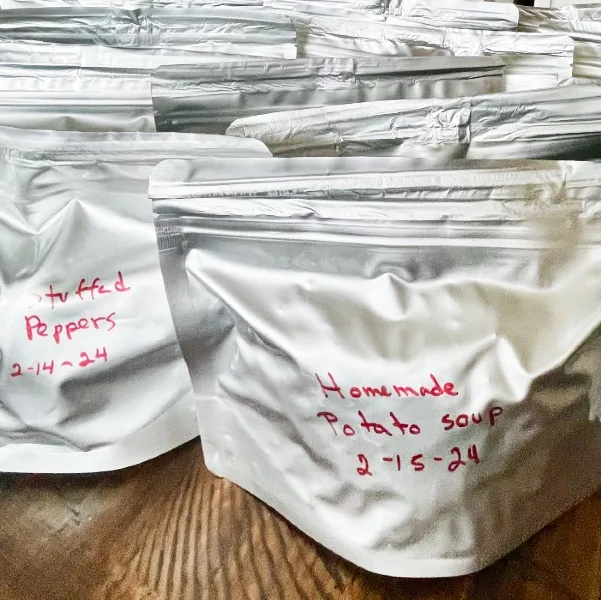
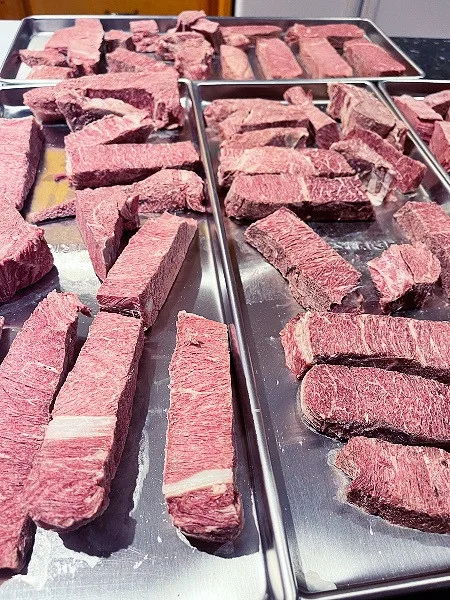

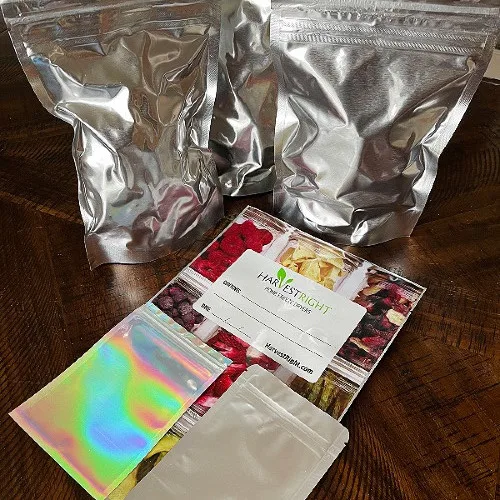
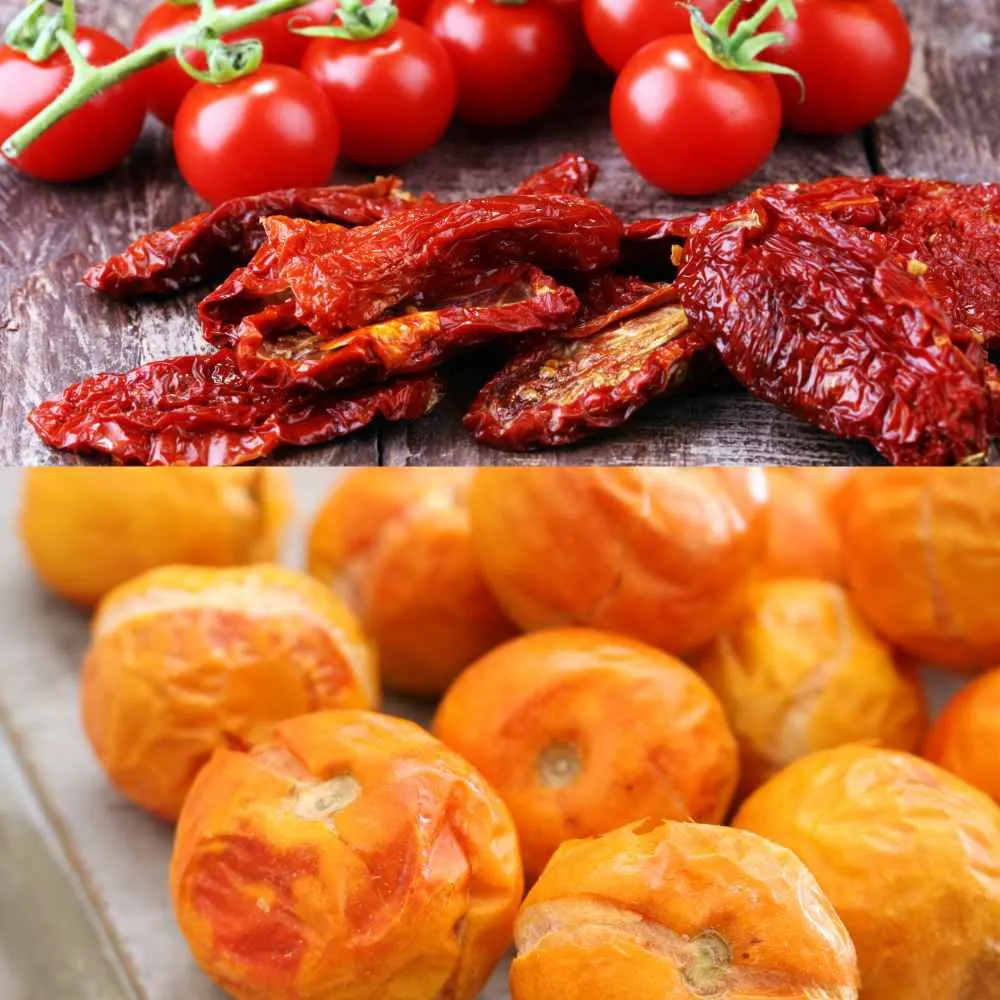
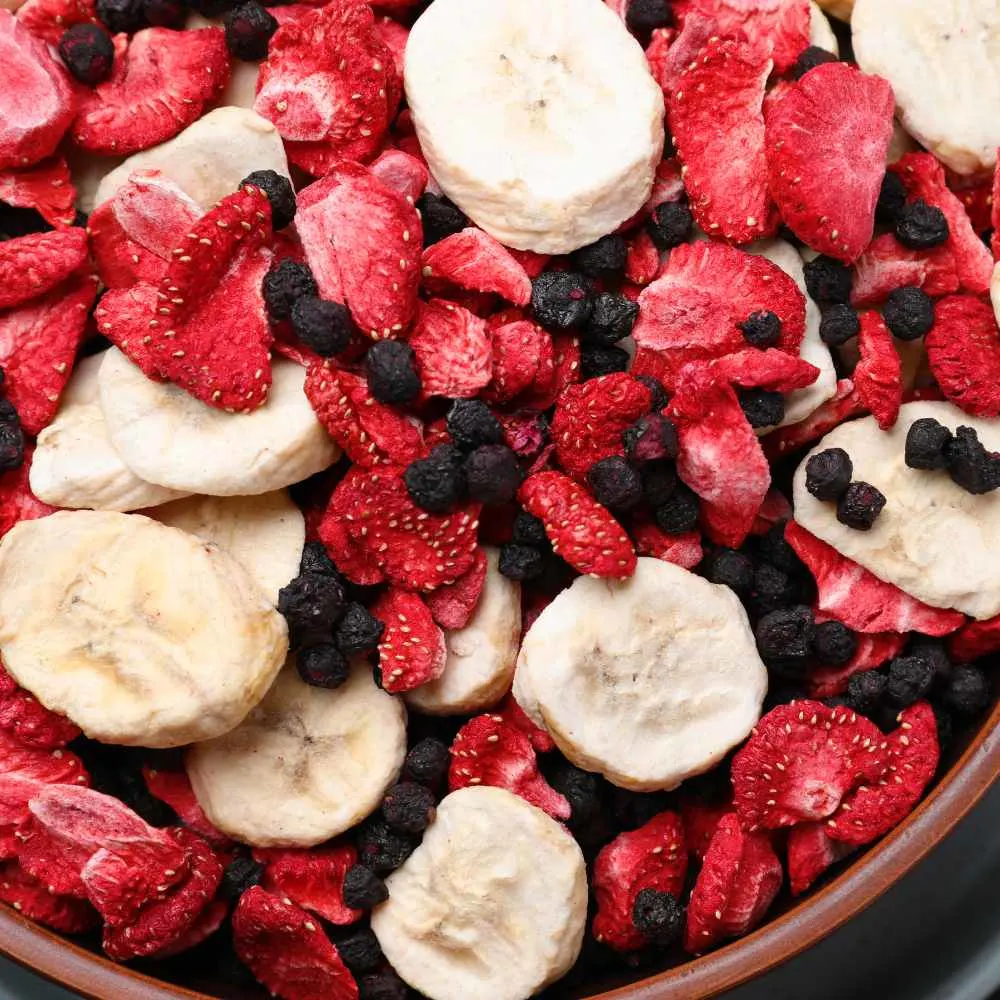
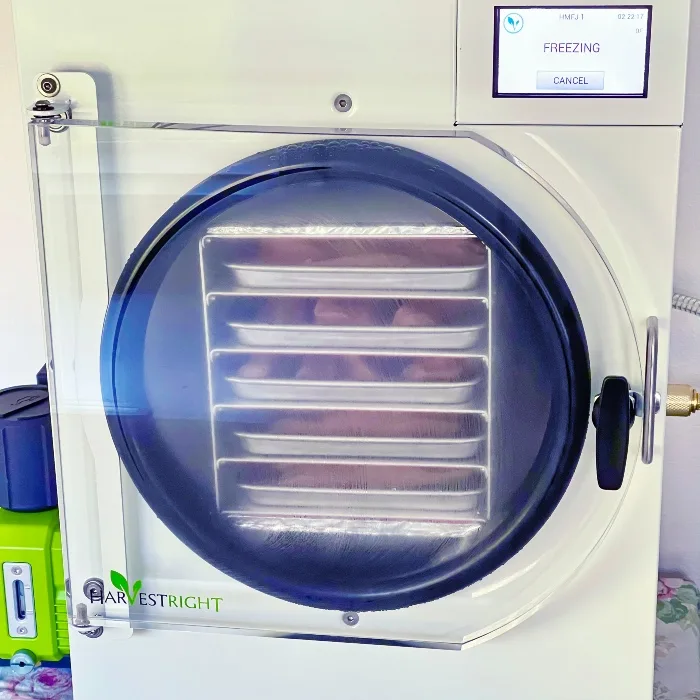
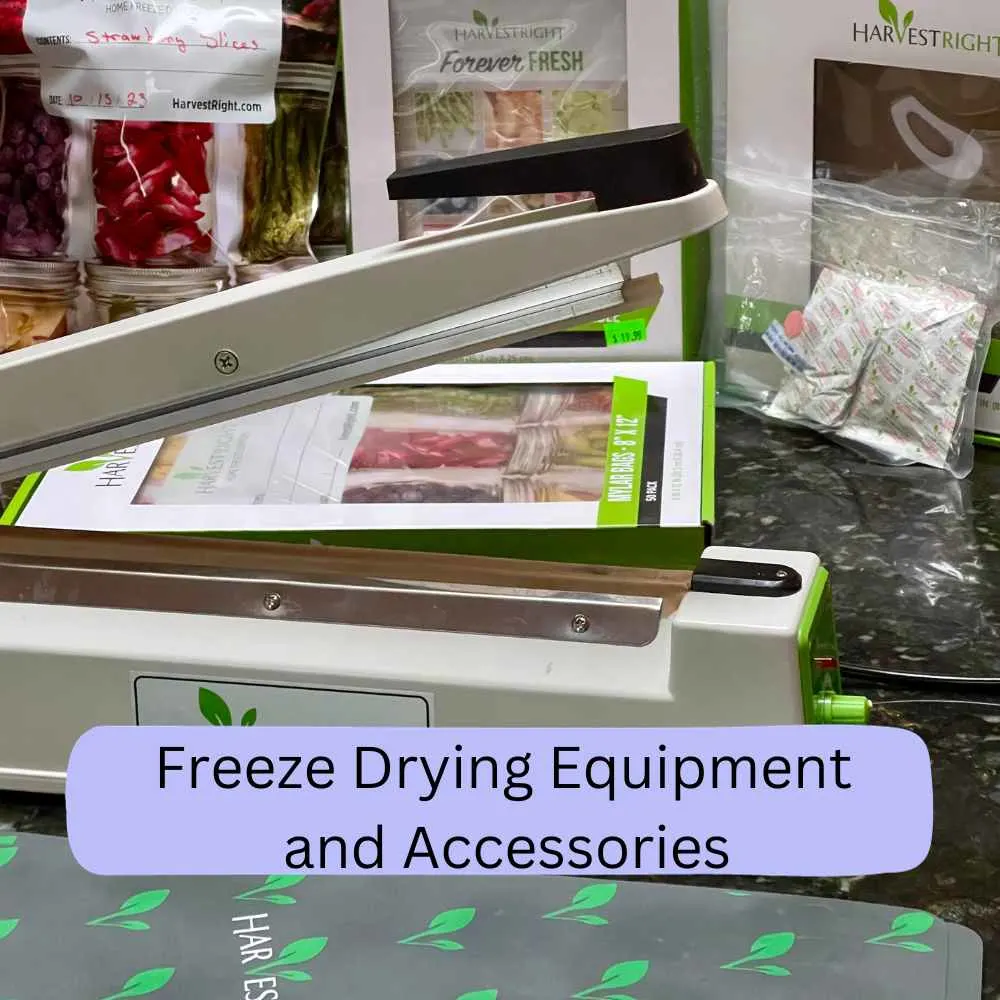

Related Content:
- How to Freeze Herbs
- How to Roast Peppers For The Freezer
- Freezing Corn on the Cob
- freezing Fresh blueberries Easily
- Homemade Grape Juice
- Easy Apple Pie Filling Recipe
